Co-Branded Everything… Enough Already?
Co-branded landing pages, co-branded products, co-branded marketing campaigns, co-branded emails – it seems like everywhere you look, brands are teaming up with other brands or influencers. Limited-edition sneaker drops from Brand X and Brand Y, influencer “editions” of consumer products, collaborative Instagram giveaways, joint email newsletters… enough already! What does all this mean, and what does it say about the emerging “collab economy”? In a world where attention is the scarcest resource, companies are increasingly turning to partnerships – brand-to-brand, brand-to-influencer, influencer-to-influencer – as a way to break through the noise. Brand partnerships used to be rare and special, but today “no new collaboration is too zany” as every niche and subculture gets its own crossover event (econdevshow.com). This explosion of co-branding isn’t just a fad; it’s a strategic response to how marketing is evolving. To understand why everyone from scrappy DTC startups to global giants is jumping on the collaboration bandwagon, we first need to define what co-branding really is and why it holds such power.
What Is Co-Branding (and What’s Driving the Collab Economy)?
At its core, co-branding is a strategic marketing partnership between two entities (often two brands, or a brand and an individual creator) that jointly create or promote a product, service, or campaign. In a true co-branding partnership, each party’s success benefits the other – the classic “win-win” situation (blog.hubspot.com). For example, when Betty Crocker teamed up with Hershey’s to include real chocolate syrup in a brownie mix, both brands gained: Hershey’s got its product into more kitchens, and Betty Crocker made its brownies more enticing (blog.hubspot.comblog.hubspot.com). The defining trait of co-branding is that both brands’ identities are prominent, and they jointly create value that neither could achieve alone. This could mean a co-branded product (two brand names on one item), a co-marketing campaign or event, or even a co-branded landing page on a website where two brands’ visuals and messages are combined.
Co-branding comes in many forms today. We see brand-to-brand collaborations – from high-fashion meets streetwear (think Balenciaga x Crocs limited-edition clogs) to fast food meets footwear (KFC x Crocs chicken-scented clogs). We also see brand-to-influencer partnerships – like a beverage company partnering with a fitness YouTuber to launch a new flavor, or a cosmetics brand co-creating a makeup line with a beauty influencer. In all cases, the idea is to harness two audiences and two brand reputations at once. As marketing experts note, co-branding “offers participating brands the opportunity to tap into new target groups and win new customers” (bpc.works). In other words, it multiplies your reach by combining your audience with your partner’s audience (blog.hubspot.com).
Why is this happening now? Simply put, collaborations are booming because they work. Collaboration has become an obsession in marketing because our digital world is so saturated with content and choices. Traditional advertising is losing trust (a striking 84% of millennials say they distrust traditional ads), and attention spans are fragmented. A partnership can cut through that skepticism by transferring trust – if you love Brand A and Brand A vouches for Brand B, you’re more likely to give Brand B a chance. It’s telling that 34% of marketers say co-branding or co-marketing partnerships are the single most effective way to grow their email subscriber list (breezy.io). (a key metric of customer interest). Likewise, one survey found 68% of consumers can make a buying decision after seeing a co-branded campaign without ever needing to speak to a sales rep, an indicator of how persuasive a well-matched partnership can be in building credibility.
The data reflects an ongoing trend: the Collab Economy is on the rise. Brand-influencer collaborations on platforms like Instagram and YouTube have grown over 50% in the last five years (promobilemarketing.com). And brand-to-brand alliances are no longer occasional stunts; they’re a staple strategy. As one Bloomberg industry piece put it, partnerships have gone from “sparing, targeted – special, even” to ubiquitous, covering even the most unexpected pairings. All of this signals that co-branding isn’t a gimmick, it’s becoming a foundational strategy for growth. Let’s dig into why co-branding packs such a punch, both psychologically for consumers and strategically for businesses.
The Psychology of Co-Branding: Trust, Hype, and Everything in Between
Co-branding holds a unique psychological power over consumers. In an era of infinite choices, seeing two names you know and trust working together can immediately grab attention and earn confidence. Here are a few of the key psychological benefits that make co-branding so potent:
- Instant Trust by Association: When an emerging brand teams up with an established, respected partner, it gains instant credibility in the eyes of consumers. The goodwill and trust that customers have for one brand transfer over to the new partner. Marketing experts note that a lesser-known company can “boost [its] reputation with an established brand,” combining the established brand’s loyal following with the new value the upstart offers (blog.hubspot.com). For the established player, partnering with a fresh, cool startup can make it appear more innovative and in-touch. In either case, each brand is essentially vouching for the other. This dynamic is especially evident in influencer partnerships: followers trust their favorite creator, so if that creator co-develops or endorses a product, it comes pre-packaged with authenticity and credibility. (Why is an Andrew Huberman or a Tim Ferriss talking about this supplement? Because they genuinely use and believe in it – a powerful message, as we’ll see with AG1’s example below.)
- Hype, Novelty, and “1+1=3” Impact: Co-branded releases often carry a sense of novelty and exclusivity that excites consumers. Fans love to see their favorite worlds collide – whether it’s a beloved snack food teaming up with a fashion brand or two top influencers creating a joint video. These unexpected pairings generate buzz and media attention precisely because they’re novel. In many cases, co-branded products are released as limited editions or “drops,” which adds urgency and FOMO (fear of missing out) to the mix. The result: highly engaged customers and even resale market frenzies. A striking example comes from Crocs: partnerships with celebrities like Post Malone, Justin Bieber, and even brands like KFC turned Crocs from a mocked shoe into a cult fashion item. Those collab clogs generated such hype that sales of Crocs on resale site StockX jumped 750%, with the limited pairs reselling at 125% over retail price (thehustle.co). Two brands together can truly create a sum greater than their parts – grabbing far more attention as a duo than they would solo.
- Emotional Connection and Storytelling: A collaboration often tells a story that resonates emotionally. Perhaps it’s two brands with shared values coming together for a cause (e.g. a charity co-branded campaign), or an influencer lending their personal story to a product’s development. These narratives make marketing feel less like marketing and more like meaning. For instance, when Crocs partnered with LGBTQ+ icon Ruby Rose for a Pride-themed shoe and donated proceeds to GLAAD, it wasn’t just a product, it was a statement of values. Crocs’ head of global marketing, Heidi Cooley, said “every collaboration comes from a place of authenticity… Ruby Rose was a fan of Crocs before we ever reached out”, highlighting that genuine alignment is key (econsultancy.com). Consumers pick up on that authenticity and respond with stronger loyalty. Co-branding can thus humanize brands and deepen emotional engagement, because it often centers around shared passions or communities (gaming, music, fitness, etc.) that people care about.
In a marketplace overflowing with generic ads and impersonal digital campaigns, these psychological triggers – trust, excitement, authenticity give co-branded initiatives a powerful edge. They feel more like organic endorsements or cultural events than advertising. As one marketing study put it, co-branded content can enable consumers to make purchase decisions more autonomously (68% do so without a salesperson after seeing a good co-branded campaign) because the partnership itself has already convinced them. Now, beyond psychology, what about the hard business strategy behind all this? As it turns out, co-branding brings an arsenal of tangible growth advantages.
Strategic Advantages of Co-Branding: Why 1 + 1 = 3 for Growth
From a business perspective, co-branding isn’t just a feel-good exercise, it delivers concrete strategic benefits. In an ultra-competitive environment (especially for DTC brands), these advantages can be game-changers for growth. Let’s break down why co-branding is becoming a go-to growth lever:
1. Dramatically Expanded Reach and New Audience Exposure. By partnering up, brands essentially “loan” each other their audiences. If Brand A has 500k loyal followers and Brand B has another 500k, a co-marketing effort can potentially expose each brand to many of the other’s fans – effectively doubling reach. As HubSpot’s marketing guide notes, “co-branding multiplies your brand’s audience with the audience of another respected brand,” allowing each partner to reach new demographics or geographies that would be hard to access alone (blog.hubspot.com). A co-branded campaign can also generate cross-platform visibility – for example, a fashion brand partnering with a famous gamer might get introduced to millions on Twitch, while the gamer gains presence in fashion press. In a saturated digital marketplace, this kind of audience cross-pollination is invaluable (and much cheaper than buying equivalent exposure via ads).
2. Cost Sharing and Resource Pooling. Another practical benefit: two partners can do more with less by sharing the load. “Co-branding gives both teams the resources of their partner – adding more staff, budget, and knowledge to each campaign,” as one analysis points out (blog.hubspot.com). In plain terms, you split the marketing costs and effort, but both reap the rewards. Joint campaigns can also mean shared distribution channels (e.g. both brands email their customers about the collab, both post on social, etc.), effectively doubling the promotional muscle without doubling the spend. Especially for cash-constrained startups, teaming up with a partner can stretch marketing dollars significantly further. It’s no surprise that partnership and affiliate marketing are on the rise as cost-effective growth hacks – one study found 60% of merchants making $5M+ in revenue have leveraged affiliate/partner marketing, and major brands derive as much as 25% of their online sales from these partnerships (tapfiliate.com). The reason? You only pay for results, and you’re tapping into partners who already have trust and reach, dramatically lowering customer acquisition cost.
3. Credibility, Influence and Conversion Boosts. We touched on trust transfer in the psychological sense; strategically, this manifests as higher conversion rates and easier market entry. When two brands co-sign a product, consumers often need less convincing. For example, when GoPro (camera maker) teamed with Red Bull (energy drink/lifestyle brand) on co-branded extreme sports events and content, the association amplified both brands’ positioning. Red Bull’s VP of marketing noted that GoPro’s tech enabled new content angles while Red Bull’s brand lent its edgy reputation – together they created campaigns neither could do alone (blog.hubspot.comblog.hubspot.com). The result was a halo effect: fans of action sports viewed GoPro and Red Bull as part of the same “extreme lifestyle” ecosystem, making them more likely to purchase. In general, strategic partnerships can lift everything from brand awareness to sales. In fact, 77% of companies that engaged in co-selling partnerships reported direct or indirect increases in profits (breezy.io). It’s simply easier to win customers when you have a credible ally reinforcing your message, whether that ally is a beloved influencer or a complementary brand.
4. Faster Scale via Partner Channels (Affiliate & Co-Selling Models). A very practical growth lever emerging from the co-branding trend is the co-selling model, essentially turning partners into an extended salesforce. This can take the form of affiliate programs, ambassador programs, or joint distribution deals. For instance, many DTC brands now equip influencers with personalized referral links or even custom co-branded landing pages (featuring the influencer’s name/branding alongside the product) to drive sales, as we’ll see with an example like AG1. These co-branded referral programs can explode a brand’s growth. The affiliate industry’s statistics are telling: 81% of brands now run some form of affiliate program and a large share of those brands credit these partnerships with significant revenue. Because affiliates (whether traditional bloggers or modern influencers) only earn a commission on actual sales, brands can scale distribution with relatively low risk. One report noted that 60% of merchants making $5M+ attribute a chunk of that to affiliate sales, as mentioned above, and that aligns with the idea that once you have a product people like, recruiting armies of partners to co-sell it can multiply your revenue quickly. In short, co-branding partnerships can create new sales channels overnight.
5. Innovation and “Borrowed” Expertise. Sometimes a co-branding alliance lets brands do things they couldn’t do alone. One partner might contribute product R&D know-how, the other creative branding or cultural cachet. By co-creating, they can enter new product categories or market segments faster. A classic example is a tech brand partnering with a fashion house to design a stylish wearable gadget – the tech company provides the engineering, the fashion brand provides design chops and trend credibility. Or consider a recent collab: Krispy Kreme partnered with Crocs to create doughnut-themed Crocs clogs (investors.krispykreme.cominvestors.krispykreme.com). Krispy Kreme alone would never make shoes, and Crocs alone wouldn’t come up with donut decorations, but together they created a quirky product that garnered tons of free PR (and delighted fans of both sweet treats and comfy shoes). Co-branding can be a low-risk way to experiment and innovate, since each side brings its strengths. It’s also a way to refresh a brand’s image – aligning with a trendy partner can jolt a legacy brand into relevance with younger audiences, and conversely a new brand can gain seriousness by teaming with an established player.
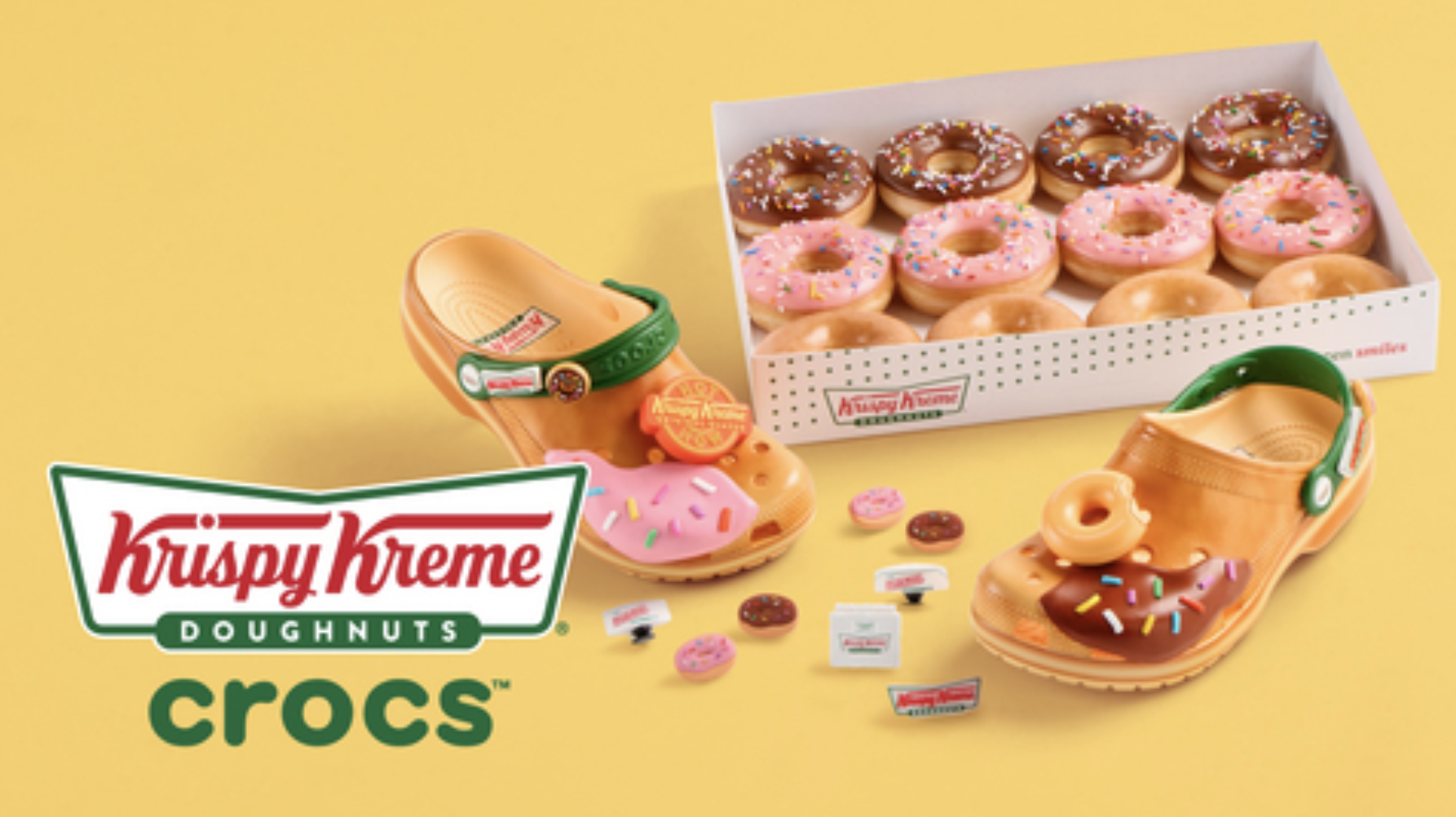
All these strategic benefits explain why co-branding is becoming a staple of growth planning, especially in consumer industries. In a world of infinite choice, companies that collaborate smartly can grow faster and more efficiently than those that go it alone. And importantly, co-branding is a lever mostly available to those who have something already be it a product, a brand identity, a community, or an audience. Which brings us to an interesting observation about modern entrepreneurship: success is increasingly a two-phase game. Phase 1: build something worth collaborating over. Phase 2: leverage collaborations to scale it up.
In a Saturated World, Co-Branding Is the New Growth Playbook
Today’s consumer markets are super-saturated. Thousands of new DTC brands launch every year, social feeds are clogged with ads, and every niche from fitness apparel to snacks is hyper-competitive. For a founder or marketer, the old playbook of building a brand with ads and direct outreach is getting more challenging (and expensive). This is where co-branding steps in as a kind of growth cheat code. As one marketing agency aptly described, “in an ever more saturated marketplace, finding sustainable ways to capture audiences’ attention is a priority. It’s no longer good enough to have a unique product or angle – a brand needs to connect with consumers in an emotional, personal way”promobilemarketing.com. Collaboration is arguably the fastest way to create that connection – by tapping into networks of trust and attention that already exist.
Think about it: if you’re an entrepreneur with a great product but struggling to get attention, partnering with someone who already has that attention (an influencer or a more established brand) can instantly put you on the map. Conversely, if you’ve built a loyal audience or community, co-branding is a way to monetize and serve that audience with new products (by teaming up with product makers who align with your brand). In many ways, the entrepreneurial journey today is evolving into “get something, then collaborate”. First, you establish something – maybe you develop a unique product, or you cultivate a sizable audience as a creator, or you build a cool brand aesthetic. Next, you figure out your collab journey from there. Who can you team up with to take it to the next level? What adjacent audience or capability can you tap via partnerships? This collab-centric mindset is becoming mainstream because those who use it tend to leapfrog those who don’t.
We already see savvy DTC founders making co-branding their primary growth lever after achieving initial traction. They treat it as a force multiplier. Have a hit product? Get it into a partner’s subscription box as a co-branded exclusive, and you both win new customers. Built a niche but passionate customer base? Partner with a bigger brand on a limited run product that speaks to your niche (gaining exposure and giving the big brand some street cred in return). Own a popular newsletter or Instagram page? Collaborate with a product brand to create a co-branded merch line for your followers. These are real strategies driving growth in 2025 and beyond. In fact, more brands are now partnering with influencers, affiliates, and complementary businesses on co-branded campaigns and co-selling initiatives to enhance their reach and credibility (peertopeermarketing.co) – a clear sign that “growth” in the future is as much about building alliances as it is about buying ads or optimizing SEO.
It’s worth noting that co-branding doesn’t just amplify growth; it can accelerate trust-building, which is crucial for longevity. When a young brand joins forces with an established player, it’s almost like getting a stamp of approval that might have taken years to earn independently. And when an established brand partners with a trendsetter, it’s like an injection of relevance that keeps it from stagnating. In a sense, collaboration is a shortcut to various goals – credibility, attention, innovation – that are hard to achieve solo in a crowded field. It’s no wonder a recent study found 34% of marketers believe co-branding is the most effective way to quickly boost things like subscriber growth, or that partnerships and affiliate-driven sales are accounting for larger and larger chunks of revenue for consumer brands.
To put it bluntly, co-branding will eat the world of marketing because it aligns with the incentives of the “haves.” If you have an audience, co-branding lets you monetize and delight them with products/services you co-create. If you have a product with promise, co-branding gets it in front of far more people at lower cost. And if you have brand equity, co-branding can extend it into new markets and demographics virtually overnight. Those who have any of these assets and don’t leverage co-branding may find themselves outpaced by those who do. The collab economy rewards the networked, the synergistic, the ones who build bridges. As the old adage goes (updated for today): “If you want to go fast, go alone; if you want to go far, go together.” Brands are realizing they want to go far – and together is how you do it.
Collaboration in Action: Examples of Co-Branding Success
Nothing illustrates the power of co-branding better than real-world examples. Let’s look at a few cases – from a supplement brand that became a billion-dollar company on the back of influencer partnerships, to brands literally co-creating products with creators for massive sales, to a once-struggling shoe brand that staged an epic comeback through endless collabs.
Athletic Greens (AG1): Building a Unicorn with Influencer Co-Branding

One of the most-talked-about DTC growth stories of recent years is Athletic Greens (AG1) – makers of a popular daily greens supplement. AG1 reached a stunning $1.2 billion valuation in 2022, and a huge part of that success came from an aggressive co-branding strategy with creators and influencers. Rather than rely on traditional ads alone, AG1 effectively co-branded its marketing with trusted individuals in health, fitness, and entrepreneurship circles.
How did they do it? AG1’s team, led by COO Kat Cole, decided to exclusively partner with creators who were genuine fans of the product (optimonk.com). They sent free samples to health experts, podcasters, and YouTubers – and when those influencers became true believers, AG1 brought them on as marketing partners. But they went beyond simple endorsements. AG1 created tailored landing pages and offers for each influencer. For example, listeners of The Tim Ferriss Show podcast who clicked Tim’s referral link would land on a special AG1 webpage skinned with Tim’s photo and a message “Recommended by Tim Ferriss – Tim’s All-in-One Daily Supplement,” along with Tim’s personal recipe for using AG1 (optimonk.com). Likewise, fans of the Huberman Lab podcast would see a page with neuroscientist Andrew Huberman’s name and endorsement. These are essentially co-branded landing pages – the influencer’s brand and AG1’s brand side by side, delivering a personalized pitch. It’s a powerful tactic that makes the customer feel like this product is hand-picked by someone they trust.
AG1 didn’t stop there. They also allowed each creator to offer exclusive deals (bonus travel packs, discounts, etc.), and they gave influencers a hefty commission (~20% per sale – effectively turning them into affiliate partners with skin in the game. In essence, every influencer partnership became a mini co-brand: AG1 x [Influencer], complete with co-branded content, custom URLs, and revenue sharing. The results speak for themselves. AG1 blanketed the podcast and social media world; “it almost feels like you can’t listen to a podcast without hearing about AG1,” one observer noted. By leveraging influencers’ credibility and audiences, AG1 massively scaled up its customer base in a way that traditional ads likely never could. The company reportedly spends over $2 million per month on podcast sponsorships (optimonk.com) – but that spend is effective because those are essentially co-branded campaigns where the podcast host’s personal brand sells the product in a trusted voice. AG1’s story is a blueprint for how a DTC brand can “growth-hack” trust and reach via co-branding: find partners who legitimately love your product, then integrate your brand with theirs so tightly that their audience sees it as a natural extension of the influencer’s own brand. It’s influencer marketing taken to the next level, and it turned AG1 into a powerhouse in a crowded nutrition market.
CreatorCommerce: Millions in Monthly Sales through Co-Selling
Another trend riding the co-branding wave is what some call CreatorCommerce – essentially, brands partnering with online creators (influencers, streamers, bloggers) not just to promote products, but to sell them directly in a revenue-share model. This goes beyond sponsored Instagram posts; it’s about co-creating product lines or giving creators their own storefronts to sell a brand’s merchandise in a co-branded fashion. The result has been eye-opening: some brands are now generating seven-figure monthly revenues by turning creators into co-branded resellers of their products.
How does this work? One approach is through affiliate storefront programs. For example, Crocs (the footwear brand) launched a “Crocs Your Way” program that lets micro-influencers curate their own personalized Crocs storefronts. These are essentially co-branded microsites – the creator’s name or handle is on the page, showcasing their favorite Crocs styles, and when their followers buy through that page, the creator earns a commission. It’s a win-win: Crocs moves more product through word-of-mouth, and the creator monetizes their influence without ever handling inventory. Crocs offers a commission on sales and even features top creators on the brand’s official social channels, effectively blurring the line between “employee” and “partner”. In essence, every passionate fan can become a co-branded affiliate of the brand.
Crocs is far from alone. Many brands on platforms like Shopify or using tools like Shopify Collective are enabling similar co-selling. Beauty and fashion brands in particular have embraced co-created product lines, e.g., a cosmetics company might develop a new palette in collaboration with a YouTube beauty guru, with the guru’s name on the packaging and a cut of the sales. These products often launch to built-in demand because the influencer’s fans see it as “their” product. For the brand, it’s like instantly accessing a devoted micro-market. A telling statistic: 60% of merchants doing affiliate or creator partnerships report earning over $5 million from those channels, and for some major retail brands, affiliates drive up to 25% of total e-commerce sales.Those figures underscore how lucrative co-selling strategies have become.
One notable example is the rise of creator-led brands like Prime Hydration (KSI & Logan Paul) or MrBeast Burger (MrBeast) – essentially influencers launching product brands that often partner with established companies behind the scenes (e.g., Prime is co-packed by a beverage company, MrBeast Burger was executed via a restaurant chain ghost-kitchen network). These hybrid co-brand models show how an influencer’s audience can be directly converted into a booming product business. In more traditional brand-affiliate setups, companies like fashion retailer Revolve have famously attributed huge growth to their army of influencer partners who both wear and sell the clothing, blurring the line between customer, marketer, and salesperson.
The takeaway: creator co-branding is turning into a major sales channel. By empowering influencers to sell products (either existing products on commission or new co-created products), brands unlock distribution that feels authentic and far-reaching. It’s not unusual now for a mid-sized DTC brand to report that a large chunk of their new customer acquisition is coming from co-branded campaigns with influencers or other brands, rather than from direct advertising. As one affiliate marketing CEO said, affiliates/partners can get you “an ‘in’ with audiences that otherwise might be closed off to you… their audience will feel connected to you because of their good relationship with the affiliate”. That principle is exactly what creator co-selling capitalizes on. The “storefront” might be digital and the commission tracked via links, but it’s old-fashioned word-of-mouth trust at heart – supercharged by modern e-commerce infrastructure. Brands that master this approach are seeing explosive growth, essentially outsourcing a large part of marketing and sales to their biggest fans (who are rewarded in turn). It’s co-branding as a distributed business model.
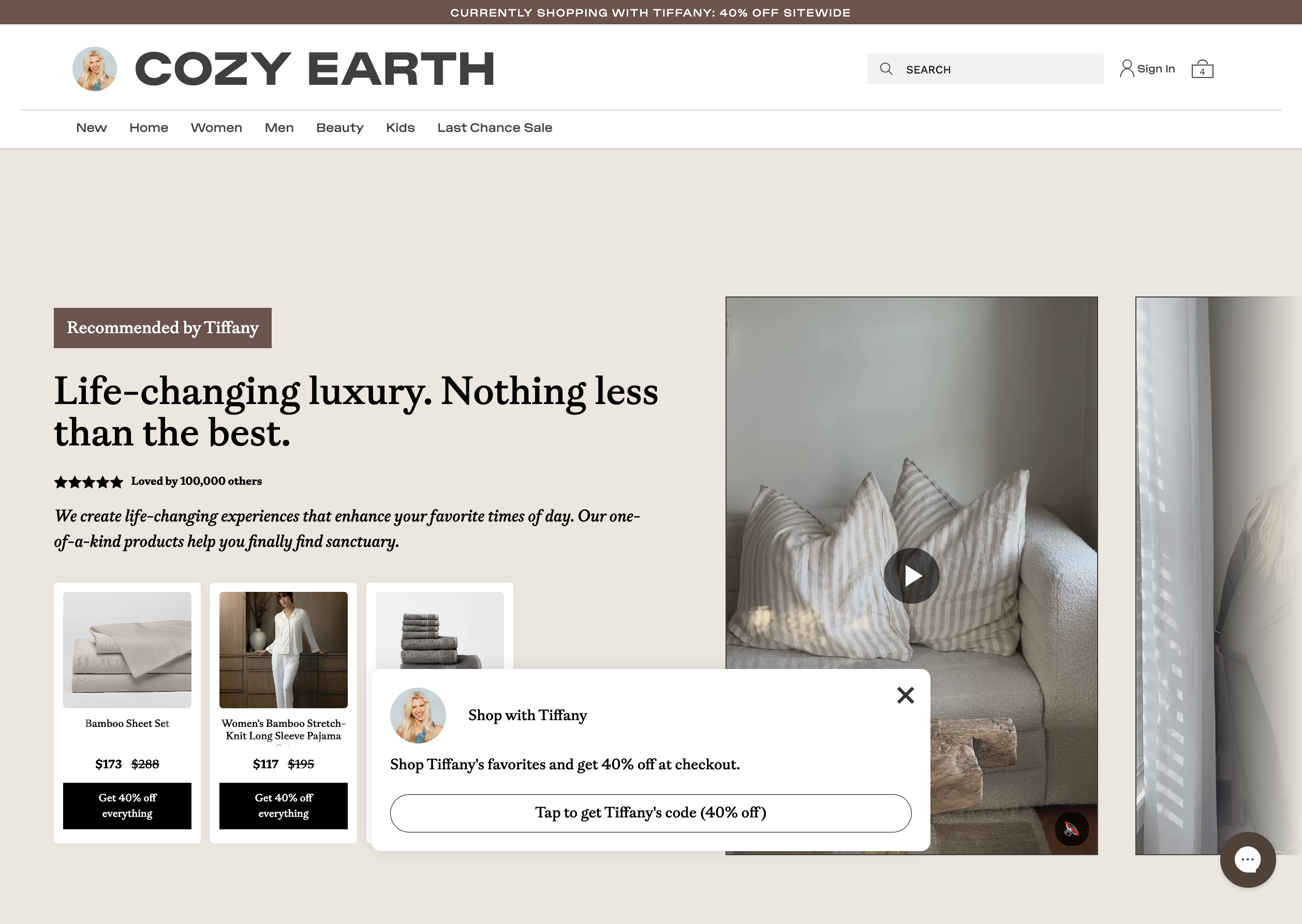
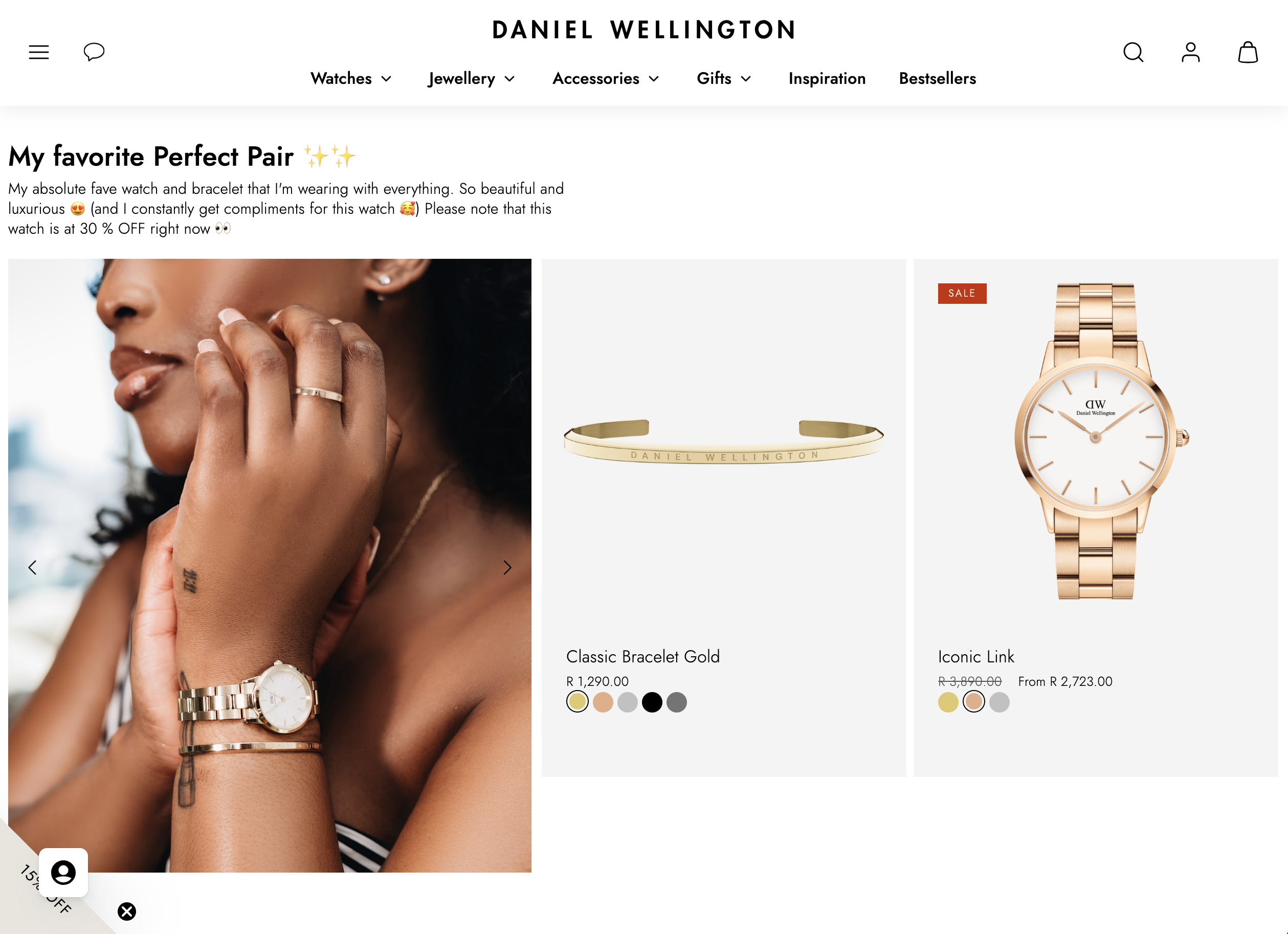
Going Deeper with Crocs: From Stalled Shoe to Collaboration Kingpin
If there’s a brand that exemplifies how co-branding can “eat the world” (or at least conquer a market), it’s Crocs. A decade ago, Crocs were often ridiculed as ugly, a passing fad of the 2000s. Fast-forward to today, and Crocs are not only back in fashion, they’re a global phenomenon – thanks largely to a relentless series of collaborations that have made the brand ultra-relevant and even cool. Crocs embraced co-branding more wholeheartedly than almost any other consumer brand, and it paid off in spades.
Consider some of the unlikely partners Crocs has teamed up with: high-fashion luxury houses like Balenciaga (which produced $850 platform Crocs that sold out), fast-food icons like KFC (yes, Kentucky Fried Chicken-themed Crocs complete with fried-chicken-scented shoe charms), pop stars like Post Malone and Justin Bieber (both of whom designed multiple sold-out Crocs styles), streetwear labels, cartoon franchises, you name it. This strategy of “strategic (and surprising) series of collaborations” has been the key to Crocs’ resurgence. By 2021, the company was boasting record revenues – Q2 2021 sales were up 93% year-over-year – and analysts pointed directly to the buzz from these collabs as a driving factor.
Why did it work? Crocs did a few things very right. First, they leaned into their brand’s polarizing nature – instead of trying to please everyone, they focused on those who loved Crocs and made the brand fun through collabs. Each collaboration gave existing fans something new to covet and collect (turns out people will buy multiple pairs of Crocs if each one has a unique collab design). At the same time, collabs drew in new fans from different subcultures. A sneakerhead might have never worn Crocs… until the Crocs x Post Malone drop became the hot streetwear item of the month. A fast-food enthusiast might suddenly want Crocs because, hey, KFC co-signed them and they’re a hilarious novelty. Essentially, Crocs used co-branding to bridge into new customer segments one by one – music, fashion, food, youth culture, nostalgia (with collabs featuring classic cartoons) – without alienating its core base who simply find the shoes comfortable.
Secondly, Crocs ensured these partnerships felt authentic and creative. Their head of marketing noted that they only partner with people who genuinely like Crocs (e.g., Post Malone was a noted Crocs wearer before his deal). This authenticity matters: consumers can smell a cash-grab, but they respond to genuine enthusiasm. Justin Bieber, upon launching his collab, even said “Crocs are comfortable and fashionable, and it’s fun to bring your own style to how you wear them”– reinforcing the idea that these collabs were about self-expression, not just merch. Crocs also often added a charitable angle or community element (such as the Pride rainbow Crocs with Ruby Rose benefitting GLAAD, or special editions for healthcare workers). These moves further deepened brand goodwill and loyalty.
The numbers around Crocs’ collaborations are jaw-dropping. We saw earlier that some styles skyrocketed on resale markets by 750%. Another indicator: Crocs has regularly been listed among the world’s hottest brands in fashion indexes since it embraced collabs – at one point in 2021 it even joined the ranks of top 10 most coveted luxury items (right alongside actual luxury brands), purely on the strength of collab-fueled demand. And financially, Crocs went from near-obscurity to expecting 20–25% annual revenue growth consistently– a turnaround many attribute to the buzz and relevance generated by partnership marketing.
Perhaps the biggest testament to Crocs’ co-branding success is how normalized it now is for the brand. Crocs releases new collaboration collections almost monthly, and consumers have come to eagerly anticipate “what will Crocs do next?” This is the hallmark of “collab culture” eating the world: when even a once-humble foam clog becomes a canvas for endless co-creations. Crocs effectively transformed into a platform as much as a product – a platform for self-expression and partnership. In doing so, it future-proofed its business and cultivated an almost cult-like following among Gen Z and millennial consumers. The lesson for other brands? Bold collaboration can reinvent your image and unlock growth, even if your product isn’t changing at all. By partnering widely (yet thoughtfully), Crocs made itself omnipresent in culture, from music festivals to high-fashion runways. That is the power of co-branding in action.
Conclusion: Join the Collab Economy – or Get Left Behind
Co-branding is no longer a quirky side tactic reserved for special occasions – it’s becoming a central strategy for growth in the modern business landscape. We’ve seen how and why it works: psychologically, it wins hearts and minds by associating brands with trusted partners and creating exciting moments; strategically, it accelerates reach, lowers marketing costs, and opens new revenue streams. In a digital world that’s more crowded, skeptical, and fast-changing than ever, collaboration is a way to amplify what you have and compensate for what you lack. It’s a kind of superpower for those who wield it wisely.
As direct-to-consumer founders and marketers chart their path forward, the question is no longer “Should we do partnerships?” but “What partnerships will propel us furthest?” The examples of AG1, Crocs, and creator commerce success stories all highlight a common theme: tapping into existing communities and credibility is the rocket fuel for growth. In contrast, trying to build a brand in isolation – no matter how great your product is – can feel like shouting into the void. The collab economy is essentially an network of brands and creators boosting each other up, and those networks are collectively eating the lunch of traditional advertising.
It’s fitting to recall the famous concept that “software is eating the world,” which described how every industry was being transformed by software. In a similar vein, co-branding is poised to eat the world of marketing and growth. The brands that master collaborative strategies will increasingly dominate their categories, because they won’t be going it alone – they’ll be harnessing the power of many. Meanwhile, brands that refuse to partner, that cling to a go-solo mindset, may find themselves outpaced and irrelevant, as consumers flock toward the richer experiences and greater trust that partnerships provide.
For DTC entrepreneurs and marketers, the mandate is clear: embrace co-branding as a primary growth lever. Build your audience, cultivate your product, hone your brand – and then find the allies who can help take you to the next level (while you help them, too). Whether it’s another brand with complementary values, a creator who can galvanize their followers on your behalf, or a community you can co-create with, look for those collaboration opportunities. The future belongs to the connected. Co-branded campaigns, products, pages, and experiences are only going to become more prevalent from here, and they’ll shape the brands that “make it” in a saturated marketplace. In the collab economy, the whole really is greater than the sum of its parts. By coming together, brands and creators can build something bigger – bigger audiences, bigger impact, and yes, bigger sales. In the end, that’s why co-branding will eat the world: because together, we can do more than we ever could alone.

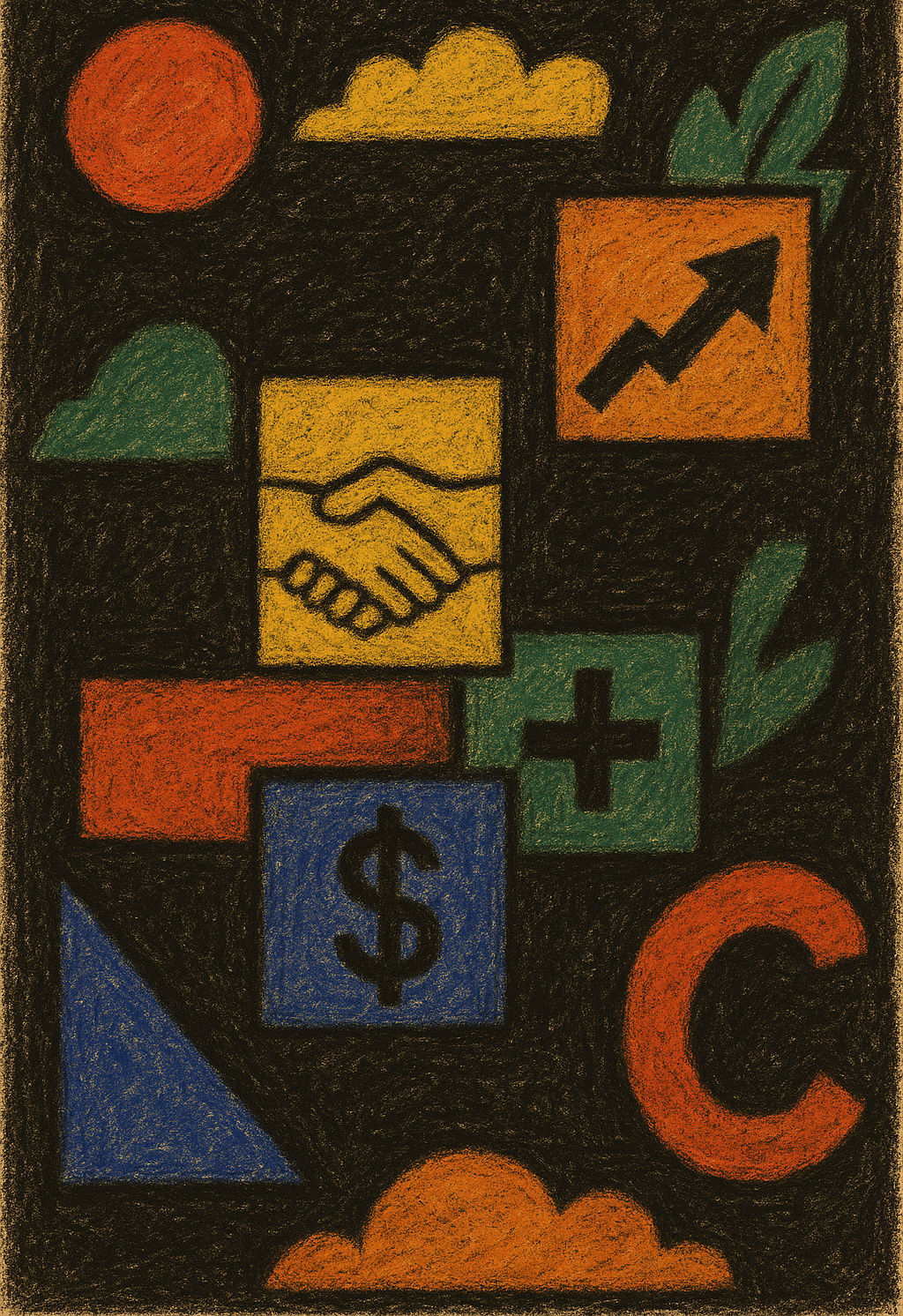


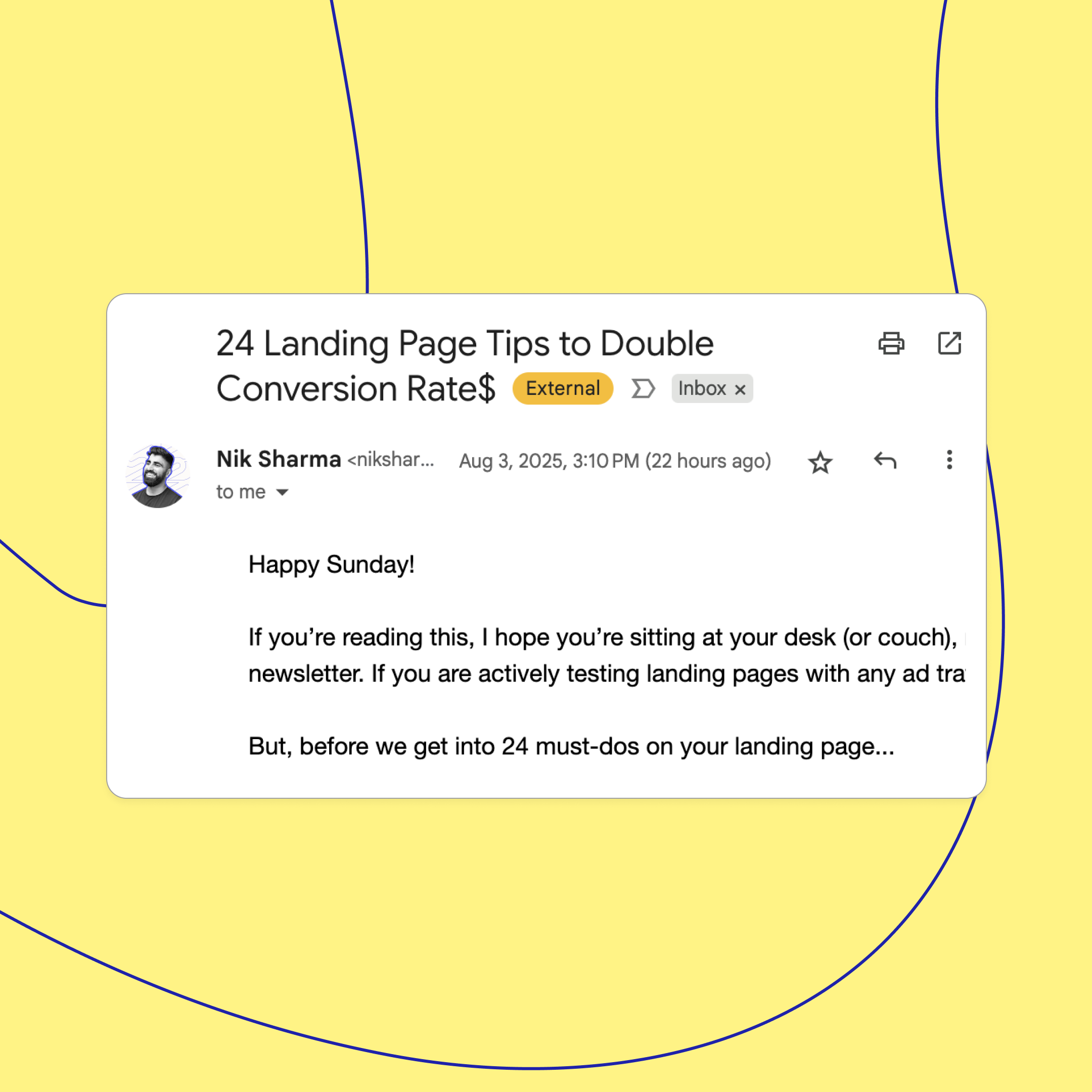
.png)





%201.png)
%201.png)
